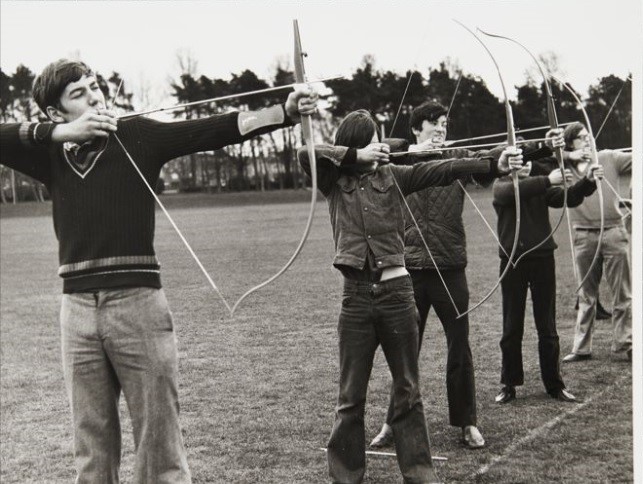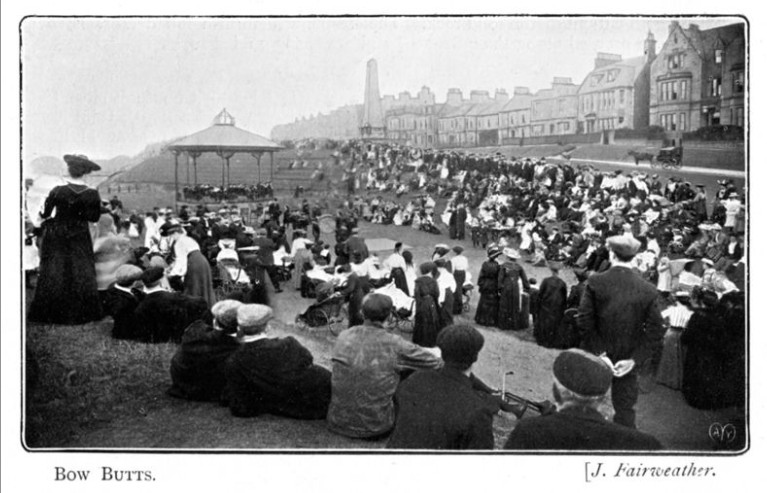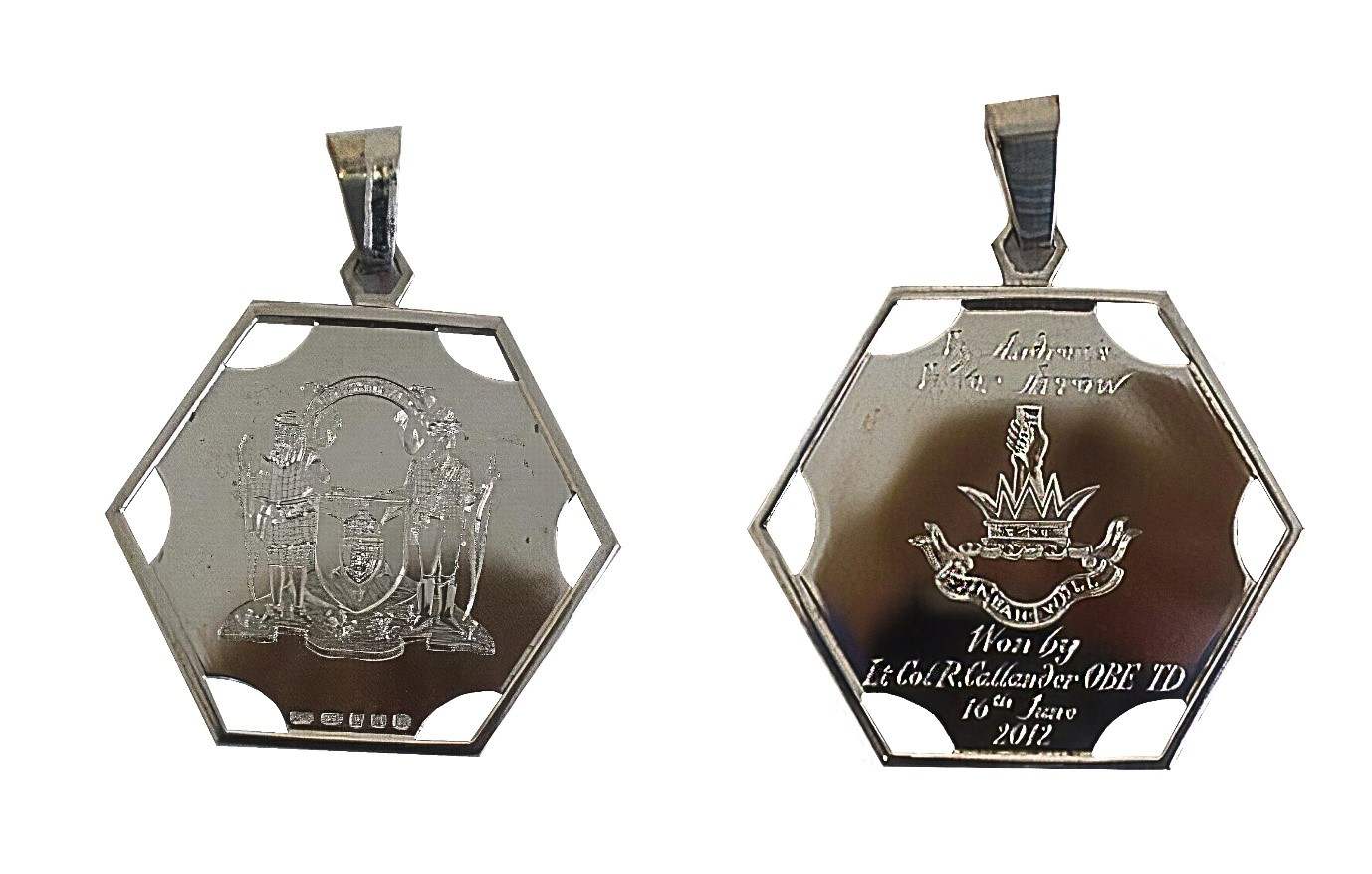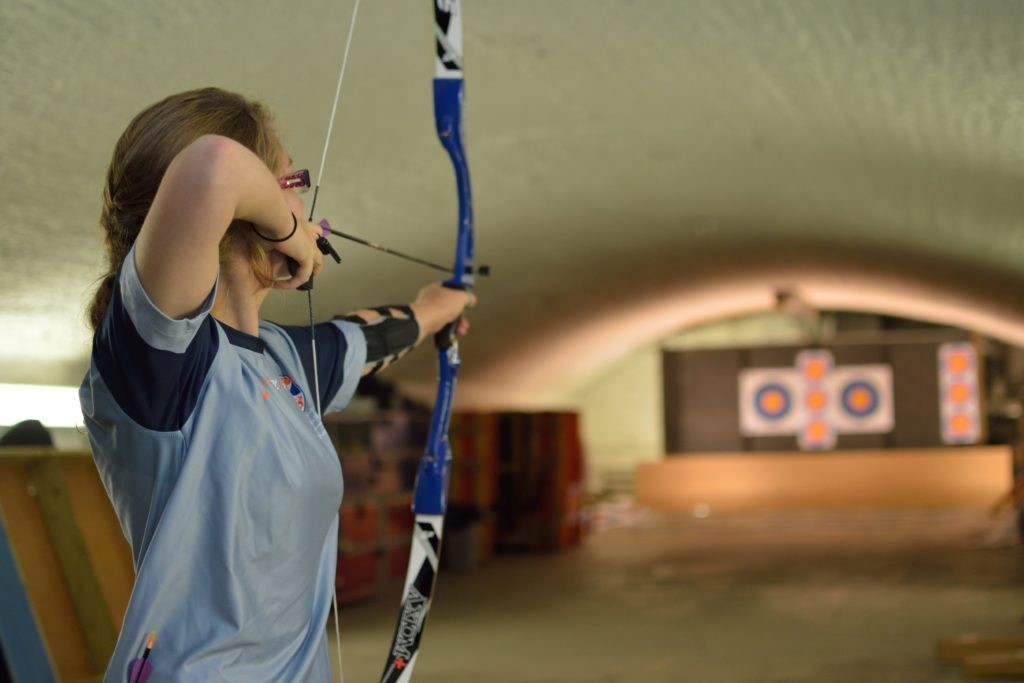The oldest Sports Club at the University is the Archery Club, which officially dates back to 1618, although was a sport and pastime likely enjoyed by students since the University’s foundation. We hold many medals in the collection here at the Museums of the University of St Andrews and will take a look at the history of archery in St Andrews, our medals and a closer look at one of the more recent acquisitions.

Bow Butts and Butts Wynd
Two places in the town still bear witness to the history of archery and connections to the sport. Bow Butts lies just behind the Royal and Ancient Clubhouse and is the grassy area surrounding the Martyr’s Monument near to St Andrews Aquarium. The name originates from the old requirement that all able-bodied men must be able to bear arms in time of war, with the bow and arrow being the weapon of choice. It was where the archery range sat, which then later moved further along the Scores to Butts Wynd – where the arrow butts were for practice.
Practice Requirements
All men and boys over 12 years were expected to take part in weekly archery practice and also take part in competitions held annually in the town. By 1457, archery was not held in such high esteem as the new sport of football which came in, which meant James II enacted a ban on playing football on Sundays so that archery was practiced instead. By the 18th Century, the need for having archers had waned and it became a sport and leisure activity which was practised and encouraged by the University.

St Andrews Silver Arrow
The first known St Andrews Silver Arrow archery competition dates to the first recorded date of the Archery Club in 1618, although it likely originated in some form from 1418 when students from St Leonard’s and St Salvator’s Colleges competed to be Champion Archer. The Faculty of Arts announced the competition as an annual event to be held in St Andrews with the aim to identify the Champion Archer of the University. While the tradition seemingly died out in the second half of 1700s, the competition revived in the 1970s thanks to the St Andrews Archery Club and Kate Kennedy Club and is now held annually. The last competition saw Lucy Coutts winning the Silver Arrow in April 2019 at the University Playing Fields.
Silver arrows and medals
The Museums of the University of St Andrews hold a collection of 70 archery medals, including three Silver Arrow medals. Among them are medals won by St Andrews alumni and members of the Royal Company of Archers including Thomas Gourlay of Kingcraig (1642), Robert Fotheringham of Powrie (1712), Adam Murray (1718), and David of Scotstarvit (1707). In 2012, Lt Col Richard Callander, the winner of the competition, was presented with a fine hexagonal shimmering jewel, which will be on display in the Wardlaw Museum.

The Silver Arrow 2012 medal
Personalised commemoration of Lt Col Callander is engraved on the verso side of the medal that bears Clan Callander crest, a cubit arm holding a billet, in the centre with motto I MEAN WELL. The inscription below the crest says, ‘St. Andrews Silver Arrow Won by/Lt. Col. R. Callander OBE TD/16th June/2012’.
The recto side of the medal is decorated with the coat of arms of the Royal Company of Archers, serving as the Scottish Sovereign’s Bodyguard since 1822 when they provided the service to the King George IV during his visits north of the border. Today, the company is known as the Queen’s Bodyguard For Scotland, traditionally performing ceremonial duties during royal visits to Scotland.
On the medal, the coat of arms is held up by two archers. The uniform of the right supporter is based on a portrait of Dr Nathaniel Spens by Henry Raeburn held by the National Gallery of Scotland. The uniform of the second archer resembles portraits from Archers’ Hall in Edinburgh and the reconstructed version of the oldest company uniforms from 1704.
A royal design
The 2012 medal possesses also other connections with the royal art world and handicraft. It was created by Graham Stewart, a distinguished designer and gold and silversmith based in Dunblane. Stewart’s innovative, clean-lined, sculptural pieces of silver and high-profile commemorative presentation pieces has brought him international recognition. He exhibited in museums and galleries around the world including the V&A in London, Forbes Galleries in New York City, Hermitage Museum in St. Petersburg, World Art Museum in Beijing, Museum of Kyoto. His unique style and outstanding works brought him to many prestigious commissions by St. Mary’s Metropolitan Cathedral in Edinburgh, BBC, and the Royal Company of Archers among the others. He has created many distinguished collections including for The Scottish Parliament, Holyrood, the V&A London (Rabinovitch Collection), and for HM The Queen.

Archery Today
The Archery Club at the University is still a thriving club, although they practice now both indoors and outdoors and use more modern looking bows! They continue to take part in national and international competitions, and the Silver Arrow competition is still competed for annually. It is one of over 50 sports clubs at St Andrews which students can join and shows how sport forms the backdrop for many students’ experience of University. Alumni continue to be involved with many of the sports and show the lasting ties of collaboration, comradery and competition that sport binds everyone with.
We are always keen to hear from students, past and present, so if you would like to get in touch with us and regale us with your stories, please email them to us at [email protected].
Words by Sophie Belau-Conlon and Dr Kamila Oles